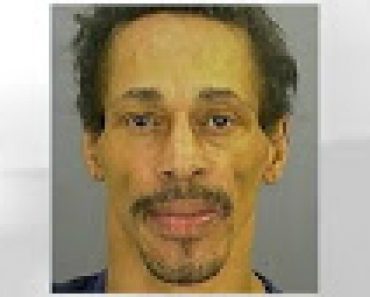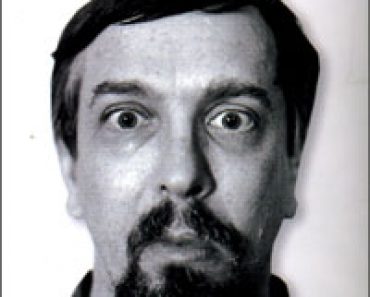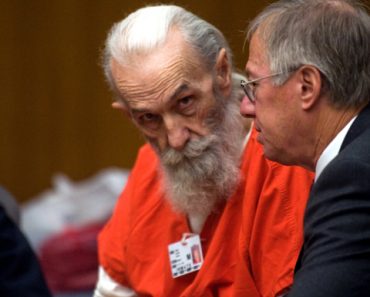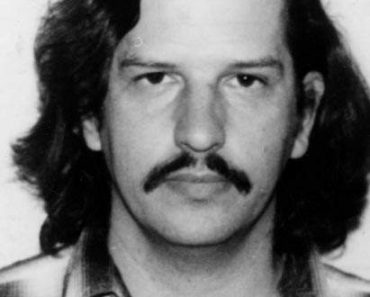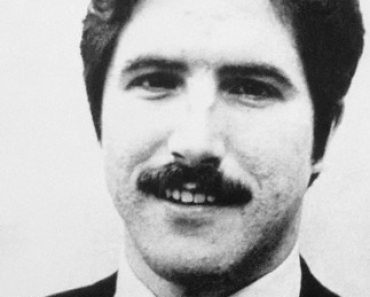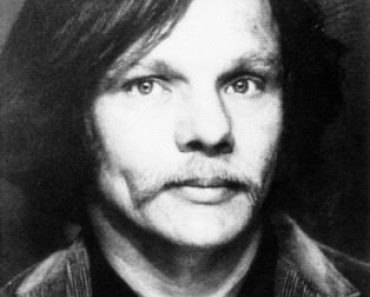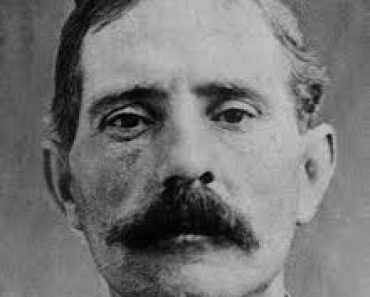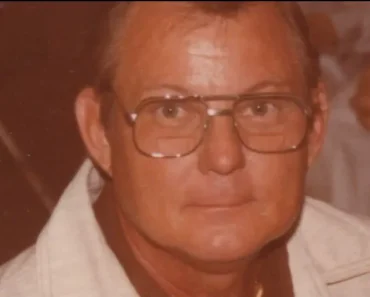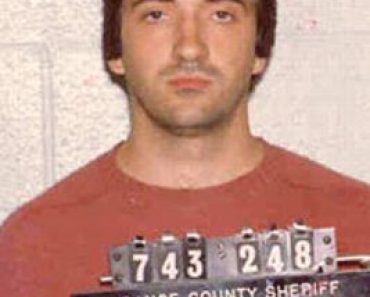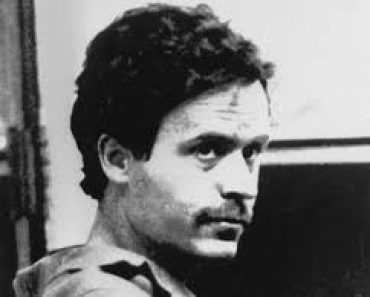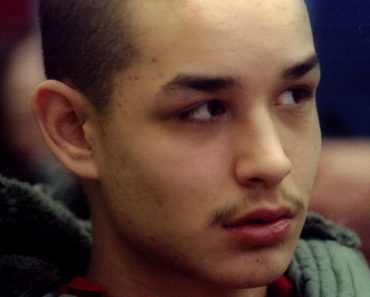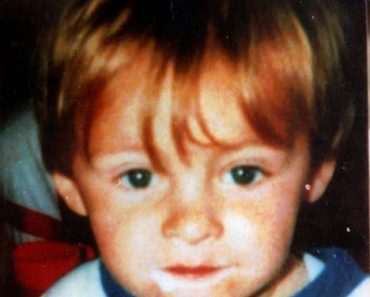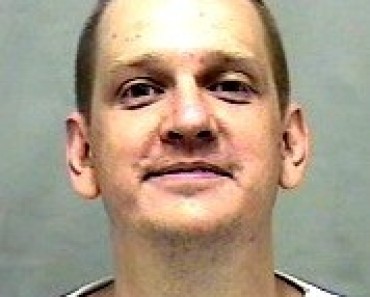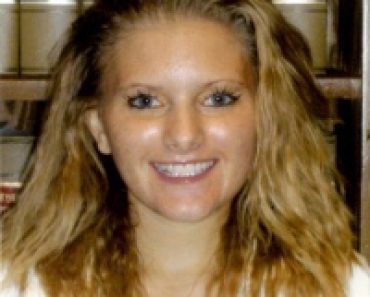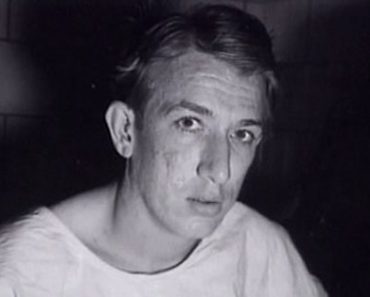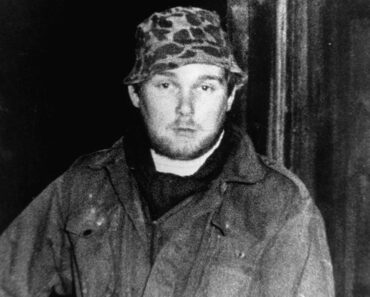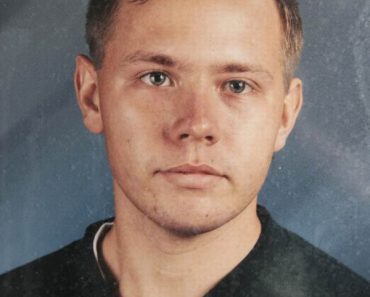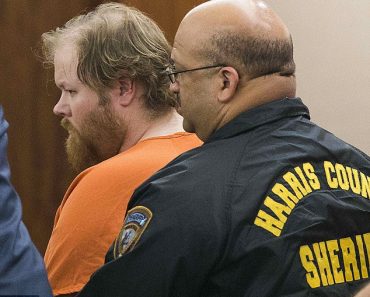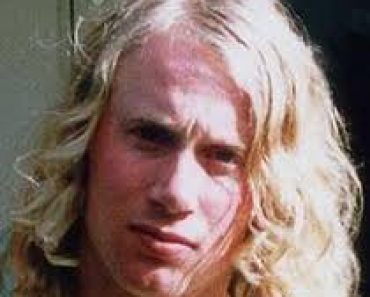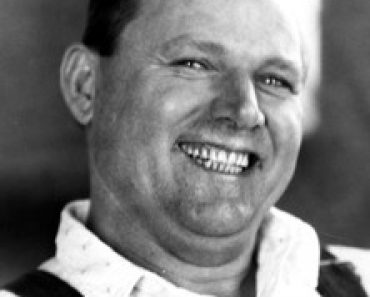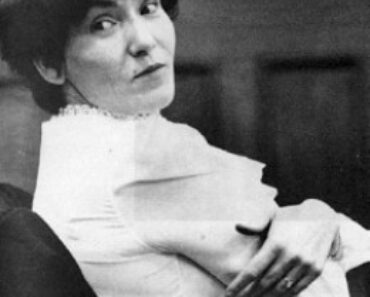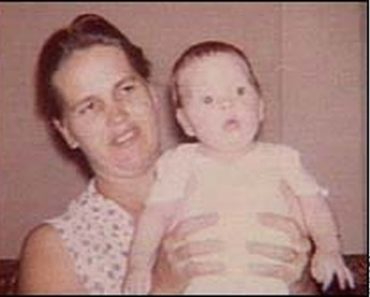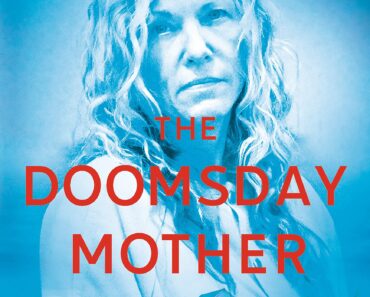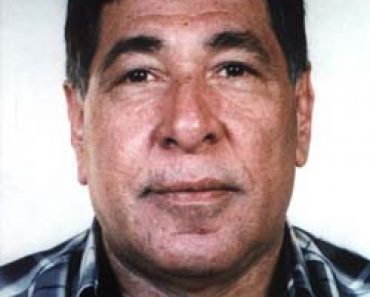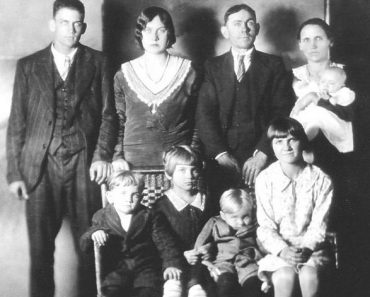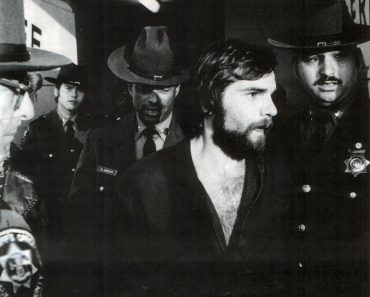Colin Ferguson | Mass Murderer
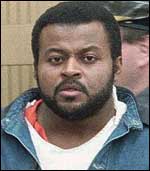
Colin Ferguson
Born:
African-Jamaican Mass Murderer
Crime Spree:
Death:
Colin Ferguson is an African-Jamaican mass murderer who was convicted of murdering six people and injuring nineteen others on the Long Island Rail Road in Garden City, New York. At the time of the killings, he was a permanent resident of the U.S., with a Green Card, by virtue of his marriage to an American citizen. He will be incarcerated in an American prison for the rest of his life.
On December 7, 1993, as the train pulled into the Merillon Avenue Station, Colin Ferguson pulled out his gun and started firing at passengers. He killed six and wounded nineteen before being stopped by three of the passengers: Kevin Blum, Mark McEntee, and Mike O’Connor. Ferguson’s trial was notable for a number of unusual developments, including his firing of his defense counsel and insisting on representing himself and questioning his own victims on the stand.
Colin Ferguson was convicted, on February 17, 1995, of murder for the deaths of the six passengers who died of their injuries. He was also convicted of attempted murder for wounding nineteen other passengers. He is currently serving his sentence of 315-years-and-8-months to life at the Attica Correctional Facility in western New York. His current earliest possible parole date is August 6, 2309.
Colin Ferguson
Colin Ferguson was born in Kingston, Jamaica on January 14, 1958, to Von Herman Ferguson and May Ferguson. Von Herman, a wealthy pharmacist and the managing director of the large pharmaceutical company, Hercules Agencies. He was once described as “one of the most prominent businessmen in Jamaica”.
Colin Ferguson’s family, including four brothers, lived in a two-story home with a nanny and a housekeeper in the Kingston suburb of Havendale. Colin attended the Calabar High School from 1969 to 1974, where the Principal at the time described him as a “well-rounded student” who played cricket and soccer. Colin graduated in the top third of his class.
In 1978, when Colin Ferguson was 20 years old, Von Herman Ferguson was killed in a car crash. His funeral was attended by government and military luminaries. Colin Ferguson’s mother died from cancer soon afterward. The deaths destroyed the family’s fortunes, and family friends said they deeply disturbed Colin Ferguson himself.
Colin moved to the United States in 1982 on a Visitor’s Visa. Friends said he had trouble dealing with the racism in the US, and he felt frustrated because he couldn’t find work outside of menial jobs. He grew depressed.
Early United States Life
Colin Ferguson met Audrey Warren, an American citizen of Jamaican descent, and married her on May 13, 1986, qualifying himself for permanent U.S. residence. Ferguson and Warren moved to a house in Long Island, where they often fought, sometimes to the point that police intervention was required.
On May 18, 1988, Warren obtained an uncontested divorce from Colin Ferguson, claiming the marriage ended because they shared “differing social views”. Acquaintances said Warren left Ferguson because he was “too aggressive or antagonistic” for her, and that the divorce was a “crushing blow” to Colin. He got a job doing clerical work for the Ademco Security Group in Syosset, New York, a hamlet of the North Shore of Long Island.
On August 18, 1989, while standing on a stool to reach invoices from a filing cabinet, Colin Ferguson slipped and fell, injuring his head, neck and back. The injury led to his termination. He filed a complaint with the New York State Workers Compensation Board, which reviewed the matter over the next several years. Ferguson enrolled at Nassau Community College in East Garden City, where he made the dean’s list three times. Also that year, he was forced to leave a class after a disciplinary hearing board found he had acted overly aggressive toward the teacher.
Colin Ferguson
In the fall of 1990, Ferguson transferred to Adelphi University in Garden City, where he majored in business administration. Colin Ferguson spoke out against coexistence with whites and routinely made calls for violence and revolution.
Ferguson regularly accused others around him of racism, even as the result of entirely unremarkable encounters. During one occasion, Ferguson complained that a white woman in the library shouted racial epithets at him after he asked her about a class assignment. An investigation concluded the incident never occurred.
Later, Colin Ferguson attended a symposium by a faculty member discussing her experiences in South Africa. Ferguson interrupted the professor by shouting, “We should be talking about the revolution in South Africa and how to get rid of the white people” and “Kill everybody white!” When students and teachers tried to quiet him, Ferguson started threatening them, repeatedly saying, “The black revolution will get you.” He was suspended from the school in June 1991 as a result of the threats, and although he was free to reapply after the suspension, he chose not to do so.
Beginning To Crumble
In 1991, Colin Ferguson started renting a room in the Flatbush neighborhood of Brooklyn. He was unemployed. Ferguson lived around many other West Indian immigrants. Neighbors said he dressed very neatly, but kept to himself and rarely smiled or spoke to anybody, except occasionally to say hello. However, his landlord Patrick Denis said Ferguson once told him, “I’m such a great person. There must be only one thing holding me back. It must be white people.”
In 1992, Warren filed a complaint with police alleging Ferguson pried open the trunk of her car. Prior to the incident, Warren had not seen him since the divorce. In February 1992, Ferguson was arrested and charged with harassing a white woman on a subway. The woman tried to sit in a vacant seat alongside Ferguson and asked him to move over, prompting Ferguson to scream at her and press his leg and elbow against her until police officers pinned him to the ground.
Colin Ferguson tried to escape the police and shouted to other nearby African Americans, “Brothers, come help me!” They did nothing.
Ferguson sent letters to the New York City Police Commissioner and other officials complaining about his arrest, describing it as “viscous and racist”, and claiming he was brutalized by the officers who arrested him. The New York City Transit Authority investigated and dismissed the claims.
A Frightening Man
In September 1992, Ferguson was awarded $26,250 for his workers compensation claim against Ademco Security Group. In April 1993, Colin Ferguson insisted he was still in pain and demanded the case be reopened so he could get more money for medical treatment. In the following weeks, he visited a Manhattan law firm for a consultation. Lauren Abramson, an attorney with the firm, said she immediately felt uncomfortable and threatened by Ferguson. She asked a law clerk to sit in on the meeting because “I did not want to be alone with him”, something Abramson said she had never done before. Although Ferguson was neatly dressed during the consultation, he acted strangely and identified himself by a false name before providing his real name.
Months later, Colin Ferguson made threatening calls to members of the firm, claiming they were discriminating against him. In one of the calls, he made reference to a massacre that occurred in California. The calls prompted the lawyers to start locking their inner office doors out of fear.
Ferguson tried to have his workers compensation claim reopened by the New York State Workers Compensation Board, which reexamined the case due to his persistence, but it was ultimately rejected. The board placed Colin Ferguson on a list of potentially dangerous people security guards were to watch out for.
Colin Ferguson
In April 1993, Ferguson moved to California in search of new career opportunities. He unsuccessfully applied for several jobs, including a car wash, where the manager laughed at him. Ferguson purchased a Ruger P-89 9mm pistol at a Turner’s Outdoorsman in Long Beach for $400, after waiting the 15-day waiting period required under California’s gun laws. Ferguson presented himself as a California resident by providing a driver’s license he received two months earlier, which had an address of the Long Beach motel where he stayed.
After Ferguson was robbed by two black men, he started carrying the gun around with him in a paper bag. Ferguson moved back to New York City in May 1993 because, he told a friend, he did not like competing with immigrants and Hispanics for jobs.
Denis, his landlord, said Colin Ferguson appeared even more unstable upon his return, speaking in the third person about “some apocryphal-type doom scenario” that included black people rising up and striking down “their pompous rulers and oppressors”.
Colin started taking five showers a day and could be heard by neighbors repeatedly chanting at night, “all the black people killing all the white people”. Denis became increasingly concerned with Ferguson’s obsession with racism and apparent growing mental instability. He finally asked Ferguson to move out.
The Massacre
On December 7, 1993, Colin Ferguson purchased a ticket at Pennsylvania Station in New York City and boarded the third car of the east-bound Long Island Rail Road (5:33) evening commuter train to Hicksville, along with 80 other passengers. Ferguson, who sat on the western end of the car, was carrying his handgun and a canvas bag filled with 160 rounds of ammunition.
As the train approached the Merillon Avenue Station, Ferguson drew the gun, dropped several cartridges on the ground, stood up and started opening fire on the passengers at random. During three minutes of gunfire, Colin Ferguson killed six people and injured another 19.
Initially, some passengers mistook the gunshots for caps or fireworks, until a woman shouted, “He’s got a gun! He’s shooting people!”
Ferguson walked east on the train, pulling the trigger steadily about every half second. Several passengers tried to hide beneath their seats, while others fled to the eastern end of the train and tried to go into the next car.
Ferguson continued to walk down the aisle of the train. He shot people to his right and left as he passed each seat, briefly facing each victim before firing. “I’m going to get you” he kept saying, as he walked down the aisle pulling the trigger.
Colin Ferguson
Other passengers, farther away in the train, did not realize a shooting had occurred until after the train stopped. As a crowd of panicked passengers fled from the third car into neighboring cars, one man appeared annoyed by their unruliness and said, “be calm”, before they forced a train door open and fled into the station. Two people were injured in the stampede of passengers.
After the train’s engineer was informed of the shooting, he decided against opening the train doors right away because two of the cars were not yet at the platform. An announcement was made ordering conductors not to open the doors. However, one conductor climbed out of a train window and opened some door of the third car from the outside so panicked passengers could escape.
Ferguson emptied two 15-round magazines during the shooting. While reloading his third magazine, somebody yelled, “Grab him!” Passengers Michael O’Connor, Kevin Blum and Mark McEntee tackled Ferguson and pinned him to one of the train’s seats. Several other passengers ran forward to grab his arms and legs and help hold him down. While he was pinned, Ferguson said, “Oh God, what did I do? What did I do? I deserve whatever I get.” Andrew Roderick, an off-duty Long Island Rail Road policeman who was picking up his wife from the train, boarded the train car and handcuffed Ferguson.
Six passengers died from their injuries during the shooting.
Ferguson Under Arrest
After arresting Colin Ferguson, police found pieces of notebook paper in his pockets with scribbled notes with the heading “reasons for this”. One of the notes referred to “racism by Caucasians and Uncle Tom Negroes”. They included a reference to “the false allegations against me by the filthy Caucasian racist female on the #1 line”, a reference to his February 1992 arrest. Ferguson’s notes expressed anger toward the New York State Workers Compensation Board, Asians, New York Governor Mario Cuomo, and “so-called civil right leaders such as the Rev. Herbert Daughtry, C. Vernon Mason, and Calvin Butts”.
They also included the names and telephone numbers of the New York lieutenant governor, the attorney general’s office and the Manhattan law firm Colin Ferguson previously threatened, who Ferguson referred to as “those corrupt ‘black’ attorneys who not only refuse to help me but tried to steal my car”.
The notes indicated Ferguson planned to wait to start the killings until after he was beyond the New York City limits out of respect for outgoing New York City Mayor David Dinkins and New York City Police Commissioner Raymond W. Kelly.
No Remorse
Colin Ferguson showed no remorse during hours of questioning from the Nassau County district attorney’s office. Officials said, “He was lucid and clear and aware of what was going on.”
Colin was arraigned on December 8, 1993, in a Long Island courtroom. He never spoke during the arraignment and did not enter a plea. He was committed to prison without bail. As he was escorted from the courthouse, a reporter asked him if he hated whites, to which Ferguson replied, “It’s a lie”.
Court
Anthony Falanga was appointed Ferguson’s attorney on December 11, 1993. Falanga called for his client to receive a psychiatric evaluation. Under New York state law, an insanity defense would require Ferguson’s lawyers to prove he suffers from a mental disease or defect and, as a result, could not tell whether his actions were right or wrong.
At the time, lawyers and mental health experts said such a defense would be difficult because Ferguson appeared to have carefully planned the attacks, and because he said “Oh God, what did I do” after he was stopped.
However, media outlets and legal experts at the time speculated a defense could argue Ferguson suffered from paranoia, particularly based on Ferguson’s history of irrational racism allegations and claims that whites were discriminating against him. Ferguson was placed on suicide watch in the Nassau County Jail.
Colin told a judge he questioned Falanga’s integrity, disagreed with his handling of the case and had no intention of cooperating with him. Dr. Allen Reichman, a psychiatrist who interviewed Colin Ferguson, indicated in his report that Ferguson may have been feigning mental illness when he spoke of conspiracies against him.
None the less, on January 5, 1994, a report by a court-appointed psychologist and psychiatrist concluded Ferguson was competent to stand trial.
Indictment
On January 19, after three days of evidence presentation, a grand jury handed up a 93-count indictment against Ferguson, which carried the possibility of up to 175 years in prison. Nassau County District Attorney Dennis Dillon said of the sentence maximum, “It’s not quite infinity, but it will do.” Dillon also announced he would not agree to any plea bargain in the case. The indictment included two counts of murder for each slain victim, both for intentional murder and for depraved indifference to human life. It also included 19 counts of attempted murder, 34 counts of assault, criminal possession of a weapon, intent to use the weapon, violation of civil rights of each of the 25 victims and “intent to harass, annoy, threaten and alarm” the victims “because of their race, color or national origin”.
On March 1, William Kunstler and Ron Kuby, law partners known for representing unpopular clients, announced they had accepted a request by Colin Ferguson to handle his case. Kunstler, who said he would not collect a fee for the defense, said Ferguson had been made out to be a “pariah” by the media and public.
In April 1994, District Attorney Dillon sought a gag order for all lawyers involved in the case, arguing Kunstler and Kuby had made statements to the media that might be inadmissible during the trial and could influence potential jurors. Kunstler and Kuby argued they would have no problem finding 12 unbiased jurors, and claimed Ferguson had already been publicly attacked in the press by government and police officials.
Nassau County Judge Donald E. Belfi rejected the gag request on April 23, claiming the impact of inflammatory statements already made by lawyers, politicians and police would fade in the months before the trial begins. However, Belfi warned attorneys from both sides to follow a state court professional disciplinary rule that already limits their comments to news organizations.
Prison Attacks
Starting at about a week into his incarceration, Colin Ferguson complained about his treatment, claiming correction officers attacked him with milk crates and a fire extinguisher, while depriving him of necessities like soap and antiperspirant spray. Ferguson said, “Of course there is no sympathy for me in the institution. When I suffered and screamed I was told that it was a good sign by the prison guards because they were hoping for my swift departure from life.” Later, Ron Kuby argued Ferguson had been a frequent target of harassment at the Nassau County Jail, and requested the United States Department of Justice intervene to ensure Ferguson’s safety.
On March 23, while returning to his cell from the medical unit, Ferguson was attacked in jail by a group of inmates. Ferguson suffered a broken nose and a swollen left eye. Prison officials had been notified by Kuby that an assault was imminent, and were in the process of following up on the warning when Ferguson was attacked. Kuby, who said he had been warned of the attack by another inmate, stated “The word was out. Everyone in the institution knew he was going to be set up.” Kuby called the attack racially motivated, and later alleged some jail officials and guards had advance knowledge of the impending assault. Five inmates were charged with second-degree assault for their connection in the attack.
In November 1994, Ferguson’s lawyers claimed prison guards taunted him with claims that the election of Governor George Pataki, a death penalty supporter, meant Ferguson would be executed if found guilty. Ferguson’s lawyers claimed prison guards showed him the headlines of newspaper stories about Pataki and claimed Ferguson was “headed for electrocution sometime soon”. Ferguson was deeply troubled by the claims, despite assurances from his attorneys that the death penalty could only be imposed in crimes after a capital punishment bill became law. Ferguson was not reassured until after a judge told him the same thing, at the request of Kunstler
“Black Rage” Defense

Kunstler and Kuby proposed an innovative defense that Ferguson had been driven to temporary insanity by a psychiatric condition they termed “black rage”. Kunstler and Kuby argued Ferguson had been driven insane by racial prejudice, and could not be held criminally liable for his actions even though he had committed the killings. The attorneys compared it to the utilization of the battered woman defense, posttraumatic stress disorder and the child abuse syndrome in other cases to negate criminal accountability. Kuby said the notes carried by Ferguson on the day of his arrest demonstrated that Ferguson was motivated by rage during the shootings.
Donald E. Belfi, the Nassau County Judge assigned to the Ferguson case, criticized Kunstler for speaking to the media about the proposed defense before it had been examined by a mental health professional. Belfi said, “Mr. Kunstler may have many talents, but until he receives his medical degree with a specialty in psychiatry, these types of conclusions should best be left for medical experts and the triers of the facts.”
However, Ferguson started to claim he was not involved in the Long Island Rail Road shootings at all, and repeatedly refused to meet with a psychiatrist chosen by Kunstler and Kuby. Ferguson told the attorneys he was receiving messages straight from God, and spoke of conspiracies to destroy him by those opposed to God.
On August 12, Kunstler and Kuby asked Judge Belfi to reconsider Ferguson’s competence to stand trial, claiming he was growing more delusional, paranoid and obsessive by the day, and that he was too mentally unbalanced for them to mount any kind of defense. George Peck, the prosecutor in Ferguson’s trial, insisted Ferguson’s apparent lack of cooperation with his lawyers is a defense tactic to avoid a trial.
Colin Ferguson
On August 20, Colin Ferguson appeared before Belfi and rejected his lawyer’s efforts to have him declared mentally unfit to stand trial. Ferguson spoke in a long and rambling manner, occasionally ignoring Belfi when the judge tried to interrupt him. Ferguson claimed a police officer who escorted him from the Nassau County Jail said to him, “You realize someone else, in fact, was actually responsible for the shooting.” When asked if Ferguson understood the role of the prosecuting attorney, Ferguson responded, “To perpetrate injustices against me.”
Kunstler and Kuby argued Ferguson’s behavior was indicative of his mental imbalance. But Belfi refused the lawyers’ request to reconsider his competence, citing the original psychiatric report that concluded Ferguson was able to understand the charges against him and was “malingering in an attempt to create an impression” that he was mentally imbalanced and unable to cooperate with his attorney. When Belfi ended the proceeding, Ferguson tried to continue talking. After he was placed into handcuffs by guards, Ferguson shouted, “They have made it too tight”, and collapsed to the floor. He had to be dragged from the courtroom. Denis Dillon suggested Kunstler was trying to create “such a bizarre situation” that the court would reverse its earlier ruling regarding Ferguson’s competence.
Removal of Kunstler and Kuby
On September 20, Kunstler and Kuby filed notice that they would pursue an insanity defense despite the objections of their client. Ferguson continued to claim he was not involved in the shootings, and proposed defending himself during the trial.
In the following months, Colin Ferguson sent Judge Belfi several letters regarding disputes between Ferguson, Kunstler and Kuby. Ferguson claimed in the letters that he was not insane, and rejected Kunstler’s and Kuby’s “black rage” defense. Although George Peck argued the letters proved Ferguson was able to understand the charges against him and was actively participating in his defense, Kuby argued the letters only further demonstrated Ferguson’s confused state of mind. On November 11, Ferguson agreed he would stop resisting efforts to meet with a court-appointed psychiatrist. As a result, Judge Belfi agreed to hold a third hearing as to whether Colin Ferguson was mentally competent to stand trial.
On December 10, Judge Belfi ruled Ferguson was competent to stand trial. Belfi said he based his decision in part on his conversations with Ferguson in the courtroom, including Ferguson’s concern over Governor’s Pataki’s promise to sign a death-penalty bill. Belfi strongly advised Ferguson against defending himself, but Ferguson said he intended to defend himself. Kuby said of the decision, “What we will have now is a complete circus. A crazy man cannot defend himself. Mr. Ferguson, evidence to the contrary, believes he is not guilty and that someone else killed all those people aboard the train.” Kuby continued, “Without a psychiatric defense, Colin has no defense. There was no doubt that he was there, that he fired the weapon, that he would have fired it more if he had not been wrestled to the ground. There is no doubt that Colin Ferguson, if sane, was guilty”.
The Trial
Ferguson’s trial proved to be bizarre as he would be cross examining the police that arrested him and victims he shot. It was broadcast live by local media and Court TV, but was constantly overshadowed by the O.J. Simpson murder case going on simultaneously on the west coast.
Colin Ferguson argued that the 93 counts he was charged with were related to 1993, and had it been 1925 he would have been charged with only 25 counts. He admitted bringing the gun onto the train, but claimed that he fell asleep, and another man grabbed his gun and began firing. He also argued that a mysterious man named Mr. Su had information concerning a conspiracy against him. He also found another man who was willing to testify that the government implanted a computer chip in Ferguson’s brain, but at the last minute decided not to call him to the stand.
His cross examination questions mostly started with “Is it your testimony…” and would simply force the witness to repeat testimony already given. When a witness refused to answer the question to his satisfaction he would often ask the judge to “admonish the witness to answer the question”. During the course of his cross-examinations, Ferguson would refer to himself in the third person, most particularly asking the victims of the shooting “Did you see Colin Ferguson…” to which the witness would reply “I saw you shoot me.” Legal experts pointed out that Ferguson’s questions were pointless and were not geared towards rebutting testimony. By not recognizing when to object to testimony and closing arguments, he would lose his right to appeal on those grounds. Among the defense witnesses Ferguson requested was President Bill Clinton.
Colin Ferguson
Ferguson originally sought to question himself on the witness stand, but ultimately did not do so. He told the judge and media outlets he intended to call a number of witnesses that would prove his innocence, including a ballistic expert, a handwriting expert and two regular eyewitnesses, but that they were afraid to come forward and take the stand. Ultimately, he did not call any of the witnesses. He also told Judge Belfi of an alleged conspiracy by the Jewish Defense League to kill him in prison if he were convicted. He said the prison slaying of serial killer Jeffrey Dahmer was “set up as a prelude against me”.
Ferguson was convicted on February 17, 1995 of murder for the death of the six passengers who died of their injuries. He was also convicted of attempted murder for wounding nineteen passengers during the mass murder. He received 315 years and eight months to life, meaning his current earliest possible parole date is August 6, 2309. He also received the judge’s promise that “Colin Ferguson will never return to society, and will spend the rest of his natural life in prison”.
At the sentencing, Judge Donald E. Belfi called Ferguson a “selfish, self-righteous coward”. He also used the sentencing as an opportunity to criticize New York’s controversial Sentencing Cap Law, which would have capped Ferguson’s sentence at 50 years had no one died in the massacre because all of the felonies he committed on the train were part of one occurrence, therefore all sentences would have been served concurrently and capped at 50 years. After his conviction, he was put in the unenviable position to argue in appellate briefs that he had incompetent counsel (himself). Colin Ferguson is currently serving his sentence at the Attica Correctional Facility in upstate New York.
source: murderpedia / wikipedia


